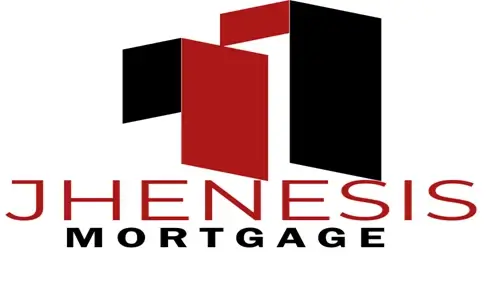
If you’re diving into the world of mortgages, you may have come across the term “pipeline mortgage.” This concept is crucial for both borrowers and lenders, as it relates to the flow of mortgage applications from the initial inquiry to the final closing. Understanding what a pipeline mortgage is and how it works can help you navigate the mortgage process more effectively, ensuring a smoother experience whether you’re a homebuyer, a mortgage broker, or a lender.
In this blog, we’ll explore what a pipeline mortgage is, why it’s important, and how it impacts the mortgage process.
What Is a Pipeline Mortgage?
A pipeline mortgage refers to the collection of mortgage loan applications that are currently being processed by a lender or mortgage broker. This "pipeline" includes all loans that have been initiated but not yet closed or funded. The pipeline is essentially the lender’s backlog of mortgage applications in various stages of approval, underwriting, and closing.
For lenders, managing this pipeline is crucial for maintaining steady operations and ensuring that loans are processed efficiently. For borrowers, understanding where your mortgage stands in the pipeline can give you insights into the timing and progress of your loan application.
Key Stages in the Mortgage Pipeline
The mortgage pipeline involves several key stages, each of which is critical in moving from application to closing. Here’s a breakdown of the typical stages:
- Loan Application:
- The pipeline process begins when a borrower submits a mortgage application. At this stage, the lender gathers essential information about the borrower’s financial situation, credit history, and the property being purchased.
- Loan Processing:
- Once the application is received, the loan processor collects and verifies all necessary documentation, such as income statements, tax returns, and credit reports. This stage is crucial for ensuring that all the information needed for underwriting is accurate and complete.
- Underwriting:
- The underwriting process involves a thorough review of the borrower’s financial information and the property’s value to assess the risk of the loan. The underwriter determines whether the borrower qualifies for the mortgage and if any additional conditions must be met before approval.
- Approval and Commitment:
- If the loan passes underwriting, the lender issues a commitment letter to the borrower, indicating that the mortgage is approved pending certain conditions, such as a final appraisal or additional documentation.
- Closing:
- The final stage in the pipeline is closing, where all loan documents are signed, and the funds are disbursed. At this point, the loan is officially completed, and the borrower takes ownership of the property.
Why Is the Mortgage Pipeline Important?
The mortgage pipeline is vital for several reasons:
- Rate Lock Management:
- Lenders often allow borrowers to lock in their interest rate for a specified period while the loan is in the pipeline. Managing these rate locks is crucial, as interest rate fluctuations can impact the profitability of the loan for the lender and the affordability for the borrower.
- Operational Efficiency:
- For lenders, managing the mortgage pipeline effectively ensures that loans are processed in a timely manner. This helps maintain customer satisfaction and reduces the likelihood of delays that could jeopardize the loan closing.
- Risk Management:
- The mortgage pipeline represents a significant portion of a lender’s future business. Monitoring the pipeline closely allows lenders to manage risk by ensuring that loans move through the process smoothly and that any potential issues are addressed promptly.
- Financial Forecasting:
- For lenders, the mortgage pipeline is a key indicator of future revenue. By tracking the number and value of loans in the pipeline, lenders can forecast cash flow and plan for future business operations.
Challenges in Managing a Mortgage Pipeline
Managing a mortgage pipeline can be challenging due to the complexities of the mortgage process and the various factors that can impact loan approval and closing. Some common challenges include:
- Rate Fluctuations:
- Interest rates can change frequently, and managing rate locks for loans in the pipeline requires careful attention. Lenders must balance the risk of locking in a rate too early with the potential benefits for the borrower.
- Documentation Delays:
- Missing or incomplete documentation can slow down the loan process, leading to delays in the pipeline. Ensuring that all required documents are collected and verified promptly is critical.
- Regulatory Compliance:
- Mortgage lenders must adhere to strict regulatory requirements, which can add complexity to the pipeline process. Ensuring compliance at every stage of the pipeline is essential to avoid legal and financial penalties.
- Customer Communication:
- Keeping borrowers informed about the status of their loan throughout the pipeline process is vital for maintaining customer satisfaction. Clear and consistent communication helps manage expectations and reduces anxiety for the borrower.
How Borrowers Can Navigate the Mortgage Pipeline
For borrowers, understanding the mortgage pipeline can help you feel more in control of the loan process. Here are a few tips for navigating the pipeline effectively:
- Stay Organized:
- Keep all your financial documents organized and readily available. This will help you respond quickly to any requests for additional information from your lender.
- Communicate Regularly:
- Stay in touch with your lender or mortgage broker throughout the process. Regular communication can help you stay informed about the status of your loan and address any issues that arise promptly.
- Be Prepared for Delays:
- While everyone involved in the process aims for a smooth and timely closing, delays can happen. Being prepared for potential setbacks can help you manage your expectations and reduce stress.
- Understand Your Rate Lock:
- Make sure you understand the terms of your rate lock and how long it will remain in effect. Discuss with your lender the potential risks and benefits of locking in your rate at different stages of the pipeline.
Call to Action:
At Jhenesis Mortgage, we’re committed to making the mortgage process as seamless and transparent as possible. Whether you’re a first-time homebuyer or a seasoned investor, our team of experts is here to guide you through every stage of the mortgage pipeline.
Ready to start your homeownership journey?
- Contact Us Today: Speak with one of our experienced mortgage specialists at 407-630-9766
- Visit Our Website: Learn more about the mortgage process and how we can help you secure the best loan for your needs at www.jhenesismortgage.com
- Get a Free Consultation: Let’s discuss your goals and find the mortgage solution that’s right for you.
Conclusion:
Understanding what a pipeline mortgage is and how it works is essential for both borrowers and lenders. For lenders, managing the mortgage pipeline effectively is key to operational efficiency, risk management, and customer satisfaction. For borrowers, staying informed about your loan’s progress in the pipeline can help you navigate the process with confidence and ease. At Jhenesis Mortgage, we’re dedicated to helping you every step of the way, ensuring that your mortgage journey is smooth and successful. Reach out to us today to explore your options and take the first step toward your dream home.

